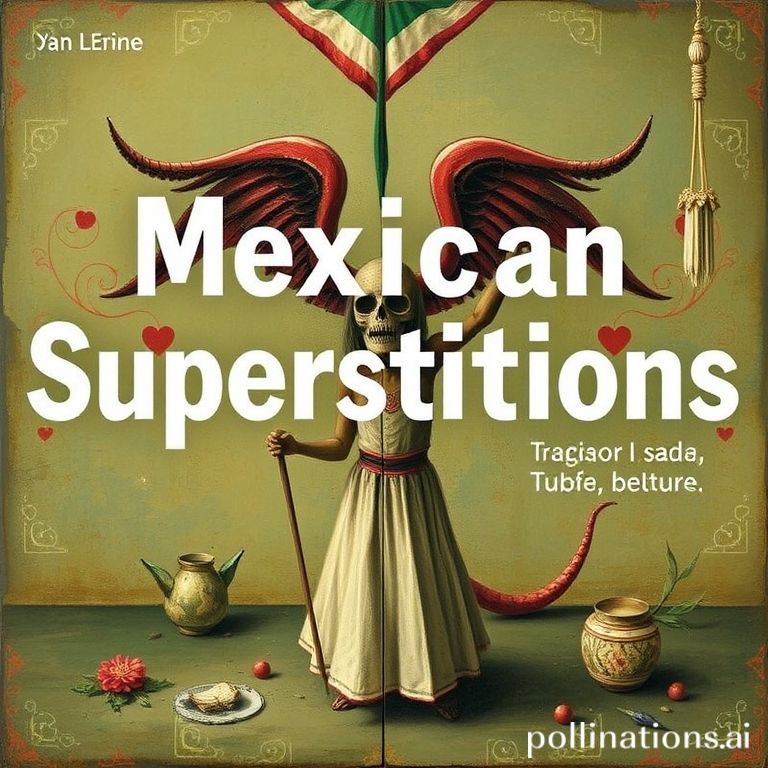Mexico, a land brimming with vibrant culture, rich history, and breathtaking landscapes, is also deeply rooted in a fascinating tapestry of superstitions. These beliefs, passed down through generations, offer a unique glimpse into the Mexican psyche, influencing daily life, decision-making, and even festive celebrations. Understanding these superstitions is key to truly appreciating the nuances of Mexican culture and fostering deeper connections with its people.
From warding off bad luck to attracting good fortune, Mexican superstitions are intertwined with everything from birth and marriage to death and the afterlife. Many of these beliefs blend indigenous traditions with Catholic influences, creating a unique spiritual landscape that continues to thrive in modern Mexico. Whether you’re planning a trip to Mexico, interested in cultural anthropology, or simply curious about the world, exploring Mexican superstitions offers a captivating journey into a world of magic and mystery.
Common Mexican Superstitions
Mexican superstitions cover a wide range of topics, and some are more prevalent than others. Here are a few of the most common beliefs you might encounter:
The Evil Eye (Mal de Ojo)
One of the most pervasive superstitions in Mexico, and many other Latin American countries, is the belief in the “evil eye,” or mal de ojo. This is the belief that someone can inflict harm or misfortune upon another person simply by looking at them with envy or malice. Babies and young children are considered particularly vulnerable. To protect against mal de ojo, people often wear amulets, such as red bracelets or charms with an eye symbol. Another common practice is to have a traditional healer perform a cleansing ritual, often involving an egg, to absorb the negative energy.
Black Cats
While in some cultures black cats are considered lucky, in Mexico, they are often associated with bad luck, particularly if they cross your path. This superstition is likely a result of the influence of European folklore during the colonial period. However, the specific interpretation can vary by region, with some areas viewing black cats as simply mischievous rather than inherently unlucky.
Sweeping at Night
Sweeping the floor at night is generally considered bad luck in Mexico. The belief is that you are sweeping away good fortune and attracting negative energy into the home. It’s best to wait until the morning to clean, ensuring that you start the day with a fresh and positive atmosphere.
Mirrors and Bad Luck
Breaking a mirror is a universal symbol of bad luck, and Mexico is no exception. However, the consequences are often seen as even more severe, potentially leading to seven years of misfortune. To mitigate the effects, some people recommend immediately gathering the broken pieces and burying them in the ground under the moonlight.
Superstitions Related to Death
Death holds a significant place in Mexican culture, and many superstitions revolve around this theme:
Dreams About Death
Dreaming about death is not necessarily interpreted as a bad omen. In many cases, it’s seen as a sign of transformation, renewal, or the end of a cycle. The specific meaning depends on the context of the dream and the individual’s personal beliefs. However, consistent or particularly vivid dreams about death may be interpreted as a warning to take care of one’s health or resolve unfinished business.
The Day of the Dead (Día de Muertos)
While not a superstition in itself, the Day of the Dead celebrations are heavily influenced by beliefs about the afterlife and the connection between the living and the dead. The elaborate altars, or ofrendas, are built to honor deceased loved ones and provide them with the sustenance and comfort they enjoyed in life. This tradition reflects a deep respect for ancestors and a belief in the ongoing spiritual connection between the worlds.
Superstitions for Good Luck
Not all Mexican superstitions are about avoiding bad luck; many are focused on attracting positive energy and good fortune:
Wearing Red Underwear on New Year’s Eve
A popular tradition for attracting love and romance in the coming year is wearing red underwear on New Year’s Eve. This belief stems from the association of the color red with passion, energy, and good fortune. The same superstition applies to attracting money, however yellow underwear is worn in that instance.
Eating Grapes at Midnight on New Year’s Eve
Another New Year’s Eve tradition is to eat twelve grapes at midnight, one for each month of the coming year. As you eat each grape, you make a wish for something you hope to achieve or experience during that month. This ritual is believed to bring good luck and prosperity throughout the year.
The Color Yellow
In general, the color yellow is associated with prosperity and happiness in Mexico. Wearing yellow clothing, having yellow flowers in your home, or even simply surrounding yourself with yellow objects is believed to attract good fortune and positive energy into your life.
Conclusion
Mexican superstitions offer a fascinating window into the country’s rich cultural heritage. These beliefs, a blend of indigenous traditions and European influences, continue to shape daily life and provide comfort, guidance, and a sense of connection to the past. While some may dismiss them as mere folklore, understanding these superstitions is essential for truly appreciating the depth and complexity of Mexican culture. They represent a unique way of seeing the world, where magic and mystery intertwine with the everyday.
If you enjoyed learning about Mexican superstitions, be sure to check out our other articles on Mexican culture and traditions! Share this article with your friends and family to spread the knowledge!
IMAGE: A brightly lit Mexican market scene at dusk. An elderly woman with a warm smile sells colorful amulets and charms, including red bracelets with eye symbols. Strings of yellow marigolds hang overhead, creating a vibrant and festive atmosphere. The style is realistic with a slightly warm color palette.


